2010
Open house at RIKEN Wako Institute
2011.03.24
RIKEN was established in 1917 as the sole research insitute in Japan to cover all of the natural sciences. Research in a wide variety of fields ranging from physics, chemistry, biology, engineering, and medicine is conducted at the fundamental to applied level. In order for the public to be informed of our research results and facilities, an open house will held coinciding with National Science & Technology week. Entrance will be free of charge.
| Date: | 9:30-16:30, Saturday, April 23, 2011. (last entry 16:00) |
|---|---|
| Location: | RIKEN Headquarters, 2-1 Hirosawa, Wako, Saitama 351-0198, Japan |
Co-Investigator of the Quantum Information Processing Project, Prof. J.S. Tsai will give a lecture from 13:00-14:00.
For details please click on the link below.
http://www.riken.go.jp/r-world/event/2011/open/wako/outline/index.html
10th Kansai (Osaka area) Quantum Information Student Chapter
2011.03.08
| Date: | Monday, April 4, 2011. |
|---|---|
| Location: | Lecture room 1, 3rd floor, Engineering Bldg. 1, Yoshida Campus, Kyoto University. |
| Organizers: | Kansai quantum information student chapter (contact: Tamate-san (Kyoto University), Tanaka-san (Osaka/Hokkaido University)) |
| Co-organizers: | Science Research Grants from the Ministry of Education, Culture, Sports, Science and Technology - 2009 Grant-in-Aid for Scientific Research on Innovative Areas (Proposal-Based Research), Quantum Cybernetics (Project Manager: J.S. Tsai). http://www.riken.jp/Qcybernetics/ Funding Program for World-Leading Innovative R&D on Science and Technology, Quantum Information Processing Project (central investigator: Yoshihisa Yamamoto). http://www.first-quantum.net/index.html |
| Oral session: | Shoko Utsunomiya (NII), Yu Watanabe (Tokyo University) |
| Poster session: | please contact us if you would like to present a poster |
For further details, please click on the following link.
http://yagura.scphys.kyoto-u.ac.jp/wakate/index.php?お知らせ#ia8271f8
Kickoff symposium for the International Center for Quantum Information at the National Insitute of Informatics (Okawa Prize lectures)
2011.01.28
The National Institute of Informatics established the International Center for Quantum Information on November 1, 2010 for futher advancement of the FIRST Quantum Information Processing Project. A kickoff symposium will be held to mark the commencement of the International Center for Quantum Information by the members of the FIRST Quantum Information Processing Project. Recipients of the Okawa Prize for 2010 will also deliver lectures at the symposium.
The Okawa Prize 2010
Dr.Charles H. Bennett (IBM Fellow, IBM Reseach)
For pioneering works on quantum cryptography, and outstanding contributions to the advancement of modern quantum information theory.
Dr. Yoshihisa Yamamoto
Professor, National Institute of Informatics
Professor, Standord University
For distinguished and pioneering accomplishment in quantum optics/quantum information processing, and outstanding contributions leading to the development of this field.
| Date: | 13:00-17:45 Thursday, 10 March, 2011 (registration from 12:30) |
|---|---|
| Location: | Star Hall, Josui Kaikan |
Public lecture by Prof. Yoshihisa Yamamoto "Quantum technologies as the key to a new information society - can quantum computers be realized?"
2011.01.26
Due to the March 11 earthquake, this public lecture has been cancelled. Details of possible rescheduling to be advised.
The modern computer has its foundations in the deciphering device Colossus used to decode the German code ENIGMA during World War II. For 70 years the computer has continued its evolution based on the same fundamental concept. However, even such computers have their weaknesses, and currently there is an international effort to realize a new type of computer that uses the fundamentally different principle of quantum mechanics to perform computations. I will give an overview of the current state of the art of the research.
| Date: | 18:30-19:45 Wednesday, 23 March, 2011 |
|---|---|
| Lacation: | conference room, 2nd floor,National Center of Sciences, National Institute of Informatics |
For details please click on the link below.
Les Houches Physics School 2011
2011.01.26
| Date: | Monday, 4 July 2011 - Friday, 29 July 2011 |
|---|---|
| Location: | Les Houches, France |
| Registration deadline: | Tuesday 1 March 2011 |
For details please click on the link below.
FIRST Science Forum
2011.01.14
The purpose of the FIRST Science Forum is to gather the leading scientists involved in the FIRST program (Funding Program for World-Leading Innovative R&D on Science and Technology, an initiative of the Council for Science and Technology Policy), and introduce to the public the status of world-leading research and their research experiences. The purpose of the forum is to provide a venue for interaction between high school students and leading researchers.
| Organizers: | Japan Science and Technology Agency |
|---|---|
| Price: | Free |
| Target audience: | High school students. General public also welcome. |
| How to participate: | Pre-registration on website. |
For details please click on the link below.
Recent results
Triple-Stranded Helicates Addressable as Lloyd’s Electron Spin-Qubits in Molecular Frames: The Helicates Link Supramolecular Chemistry to Scalable Matter Spin-Qubits
2010.09.08
The scalable implementation of qubits is the most critical issue to be solved for any physical system realizing a quantum computer or quantum information processing system (QC/QIPS). Thus, the implementation of scalable matter qubits is now a materials challenge for scientists in quantum physics and related experimental fields. S. Lloyd theoretically proposed the possible utilization of an (ABC)n periodic spin array for scalable QCs, instead of the traditional approach of a vast number of addressable spin qubits [S. Lloyd, "Quantum-mechanical computers", Sci. Am. 273, 140-145 (1995)]. Kitagawa and co-workers pointed out a salient feature of Lloyd model; that the (ABC)n system executes exponential speedup with increasing n in QC processing using only sixteen different frequencies to manipulate the addressable spin-qubits. Furthermore, they proposed how to implement quantum logic circuits by the use of Lloyd model [Y. Kawano, S. Yamashita, M. Kitagawa, "Explicit implementation of quantum circuits on a quantum-cellular-automata-like architecture", Physical Review A 72, 012301 (2005)]. Among matter qubits, molecular electron spin-qubits are one of the newest to be proposed, but show promise in implementing scalable QCs/QIPSs, in terms of an electron spin-qubit version of the Lloyd model. So far, Lloyd’s model has never been documented as a materials challenge. From a synthetic chemistry and material science point of view, Lloyd’s models of electron spin-qubits require spatial alignment of open-shell entities with non-equivalent g-tensors in appropriately designed molecular frames (termed g-tensor engineering). Here, the implementation of the g-tensor molecular engineering has been achieved by the use of a synthetically scalable oligo(imidazole)s-based triple-stranded metallo-helicate, as shown in Figure 1 (helicate: a supramolecular complex having helical structural symmetry). This is the first example of the synthesis and characterization of an electron spin-qubit version of the formidable Lloyd model. The triple-stranded helicates link supramolecular chemistry to scalable matter spin-qubits.
(Y. Morita, Y. Yakiyama, S. Nakazawa, T. Murata, T. Ise, D. Hashizume, D. Shiomi, K. Sato, M. Kitagawa, K. Nakasuji & T. Takui, "Triple-Stranded Metallo-Helicates Addressable as Lloyd’s Electron Spin Qubits", J. Am. Chem. Soc., 132, 6944 – 6946 (2010).)
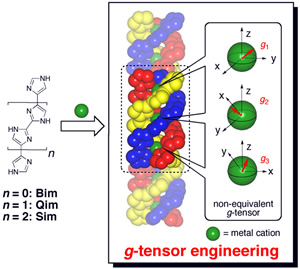
Figure 1. Supramolecular design for electron spin-based g-tensor engineering in oligo (imidazole)s-based triple-stranded helicates for an electron spin-qubit version of Lloyd model.
Two oligo (imidazole) molecules (n > 0, n = 1: quaterimidazole (Qim), n = 2: sexiimidazole (Sim)) form triple-stranded helicate with non-equivalent g-tensors (space filling model; Central deep colored trinuclear helicate is composed of Sim.). The helicity can afford additional qubits.
Dr. Jaw-Shen Tsai received the Fourth Fellow Award of Japan Society of Applied Physics in 2010.
2010.07.22
'JSAP fellow' is presented to individuals who have remarkably contributed to the progress of applied physics through the continuous activities in JSAP.
Related site
Recent results
Ultrafast optical spin echo in a single quantum dot
2010.04
Many proposed photonic quantum networks rely on matter qubits to serve as memory elements. The spin of a single electron confined in a semiconductor quantum dot forms a promising matter qubit that may be interfaced with a photonic network. Ultrafast optical spin control allows gate operations to be performed on the spin within a picoseconds timescale, orders of magnitude faster than microwave or electrical control. One obstacle to storing quantum information in a single quantum dot spin is the apparent nanosecond-timescale dephasing due to slow variations in the background nuclear magnetic field. Here we use an ultrafast, all-optical spin echo technique to increase the decoherence time of a single quantum dot electron spin from nanoseconds to several microseconds. The ratio of decoherence time to gate time exceeds 105, suggesting strong promise for future photonic quantum information processors and repeater networks.
In conclusion, we have implemented a several-microsecond quantum memory in a single-QD electron spin. By applying an ultrafast optical spin-echo sequence, we reversed the rapid dephasing caused by a slowly varying background nuclear field, and extended the decoherence time from nanoseconds to microseconds. As the applied magnetic field is increased, the decoherence time first increases, and then saturates at ~3 microseconds for high fields. This decoherence time exceeds the single-qubit gate operation time by more than five orders of magnitude. This work represents an ultrafast, all-optical implementation of a vital technique from magnetic resonance, and demonstrates the strong potential for QD–spin qubits to form the building blocks of photonic quantum logic devices and networks.
(Nature Photonics 4, 367-370 (April 2010))
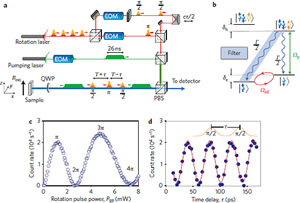
Figure 1 Experimental set-up for optical single-spin manipulation and detection.
a, Experimental set-up. One arm of the rotation laser path generates π/2 pulses, and the other arm generates π pulses. QWP, quarterwave plate; PBS, polarizing beamsplitter; EOM, electro-optic modulator. b, Energy level diagram. c, Rabi oscillations between the two spin states lead to a count rate that oscillates with varied rotation laser power PRP. d, Ramsey interference fringes as the time offset between two π/2 rotation pulses is varied.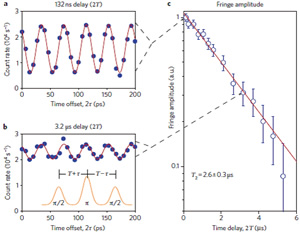
Figure 2 Experimental demonstration of spin echo and single-spin dephasing.
a, Spin-echo signal as the time offset 2τ is varied, for a time delay of 2T=264 ns and magnetic field Bext=4 T. Single-spin dephasing is evident at large time offset. b, Decaying Fourier component of fringes. Red line, exponential fit; green line, Gaussian fit. The one-standard-deviation confidence interval described in the text is determined by bootstrapping.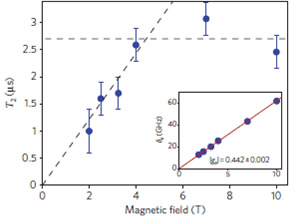
Figure 3 Measurement of T2 using spin echo.
a, Spin-echo signal as the time offset 2τ is varied, for a time delay of 2T=132 ns. Magnetic field Bext=4 T. b, Spin-echo signal for a time delay of 2T=3.2 μs. c, Spin-echo fringe amplitude on a semilog plot versus time delay 2T, showing a fit to an exponential decay. Error bars represent one-standard-deviation confidence intervals estimated by taking multiple measurements of the same delay curve.
Recent results
Artificial atoms light up
- Quantum optics with superconducting artificial atom
2010.02
Resonance fluorescence occurs when a light beam with an energy that matches an atom’s resonance energy gets absorbed by the atom and then re-emitted in random directions. As resonance fluorescence can be used to couple two photons, researchers are keen to exploit this effect in quantum computing operations. However, this effect in atoms is too small to be useful for practical applications since photons and atoms interact very weakly due to their small size.
To circumvent this problem, we created artificial atoms on computer chips (Fig. 1), where the interaction between light and the artificial atom can be optimized. With a solid-state device such as ours, made from superconducting circuits, the coupling can be very strong.
To enhance the re-emission process, we used a one-dimensional waveguide coupled to the artificial atom. This resulted in an efficient re-emission of light from the artificial atom because in the waveguide the light is channeled in only two directions. We demonstrated that about 94% of the incoming light at the resonance frequency of the superconducting circuit was absorbed and re-emitted (Fig1c). When the incident power was increased, inelastic scattering was observed. See Fig 2 for details.
By building on this strong interaction between incoming light and the artificial atom a number of potential applications are now possible. There are a whole series of experiments one can do, for example towards photon-based quantum computing. The absorption of a photon by an artificial atom, for example, could be used to control the propagation of a second photon along the waveguide, owing to the non-linear nature of the interaction of light with the artificial atom.
The result was published in Science:
Astafiev, O., Zagoskin, A.M., Abdumalikov, A.A., Pashkin, Yu.A., Yamamoto, T., Inomata, K., Nakamura, Y. & Tsai, J.S. Resonance fluorescence of a single artificial atom. Science 327, 840–843 (2010).
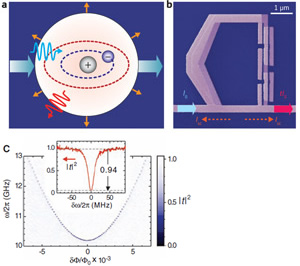
Figure1 A schematic representation of resonance fluorescence. (a) In a natural atom, an incoming light beam (left arrow) is absorbed and light is re-emitted in all spatial directions. (b) An artificial atom made from a superconducting circuit can achieve the same function. The light coming in along a one-dimensional waveguide (I0) couples to the circuit. Light is then scattered (Isc) in both directions of the wire, so that the original transmitted light (tI0) is suppressed. (C) Spectroscopy of the artificial atom showing the maximal power extinction of 94% takes place at the resonance.
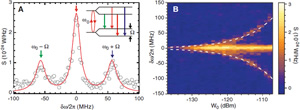
Figure2 Resonance fluorescence triplet: spectrum of inelastically scattered radiation. (A) Linear frequency spectral density of emission power under a resonant drive incident microwave power of –112 dBm. A schematic of the triplet transitions in the dressed-state picture is presented in the inset: The atomic levels split by Ω because of strong driving, and transitions with frequencies ω0 – Ω, ω0, and ω0 + Ω (marked by colored arrows), give rise to three emission peaks. (B) Resonance fluorescence emission spectrum as a function of the driving power.

